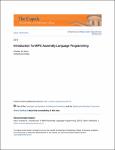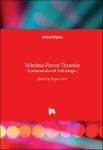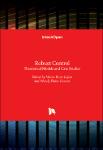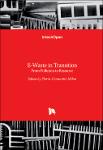Search
Author
- McFadyen, Ron (3)
- A Carpenter, Mason (1)
- Alisher, Mirzabaev (1)
- Caitlin, Finlayson (1)
- next >
Subject
- Java (5)
- programming (4)
- kinh tế (3)
- BlueJ (2)
- next >
Has File(s)
- true (24)
Search Results
Sustainable development is the 21st Century's wicked problem. After 40 years into this agenda have reversed only few unsustainable trends we hear the call for aparadigm shift, transformation, radical change or system innovations in order to finally change course. But what does this actually mean? And how do we put it into practice? This book describes the path ahead. It combines system transformation research with political economy and change leadership insights when discussing the need for a great mindshift in how human wellbeing, economic prosperity and healthy ecosystems are understood if the Great Transformations ahead are to lead to more sustainability. It shows that history is made by purposefully acting humans and introducestransformative literacy as a key skill in leading th... |
"I never seemed to find the perfect data-oriented Python book for my course, so I set out to write just such a book. Luckily at a faculty meeting three weeks before I was about to start my new book from scratch over the holiday break, Dr. Atul Prakash showed me the Think Python book which he had used to teach his Python course that semester. It is a well-written Computer Science text with a focus on short, direct explanations and ease of learning.The overall book structure has been changed to get to doing data analysis problems as quickly as possible and have a series of running examples and exercises about data analysis from the very beginning.
Chapters 2–10 are similar to the Think Python book, but there have been major changes. Number-oriented examples and exercises have been ... |
Part I: A power and systems approach: Systems thinking changes everything, Power lies at the heart of change, Shifts in social norms often underpin change. Part II: Institutions and the importance of history: How states evolve, The machinery of law, Accountability, political parties, and the media, How the international system shapes change, Transnational corporations as drivers and targets of change. Part III: What activists can (and can’t) do: Citizen activism and civil society, Leaders and leadership, The power of advocacy. Part IV: Pulling it all together: A power and systems approach to making change happen. |
"This book was written to introduce students to assembly language programming in MIPS. As with all assemblylanguage programming texts, it covers basic operators and instructions, subprogram calling, loading andstoring memory, program control, and the conversion of the assembly language program into machine code.
However this book was not written simply as a book on assembly language programming. The larger purposeof this text is to show how concepts in Higher Level Languages (HLL), such as Java or C/C++, arerepresented in assembly. By showing how program constructs from these HLL map into assembly, theconcepts will be easier to understand and use when the programmer implements programs in languages likeJava or C/C++. Concepts such as references and variables, registers, binary an... |
This text is a free introductory text that introduces MS Access and relational database design. The motivation is to support a second-year course on database systems which, to the student, is either a service course providing an introduction to database concepts, or, as a prerequisite for more advanced study in the field. |
This book is Part II of a two-part set that introduces the Java programming language. The text assumes the student will be using the BlueJ development environment and provides some introductory BlueJ material. Our experience has been that BlueJ is easy to learn and provides a good programming environment for the beginner programmer. |
This book presents some of the fundaments of wireless power transfer using inductively coupled coils, high efficiency power integrated circuits, together with recent research results for dynamic wireless power transfer for in-motion objects or vehicles. |
This book is Part I of a two-part set that introduces the Java programming language. The text assumes the student will be using the BlueJ development environment and provides some introductory BlueJ material. Our experience has been that BlueJ is easy to learn and provides a good programming environment for the beginner programmer. |
The need to be tolerant to changes in the control systems or in the operational environment of systems subject to unknown disturbances has generated new control methods that are able to deal with the non-parametrized disturbances of systems, without adapting itself to the system uncertainty but rather providing stability in the presence of errors bound in a model. With this approach in mind and with the intention to exemplify robust control applications, this book includes selected chapters that describe models of H-infinity loop, robust stability and uncertainty, among others. Each robust control method and model discussed in this book is illustrated by a relevant example that serves as an overview of the theoretical and practical method in robust control. |
E-waste management is a serious challenge across developed, transition, and developing countries because of the consumer society and the globalization process. E-waste is a fast-growing waste stream which needs more attention of international organizations, governments, and local authorities in order to improve the current waste management practices. The book reveals the pollution side of this waste stream with critical implications on the environment and public health, and also it points out the resource side which must be further developed under the circular economy framework with respect to safety regulations. In this context, complicated patterns at the global scale emerge under legal and illegal e-waste trades. The linkages between developed and developing countries and key iss... |










